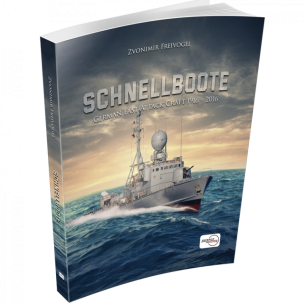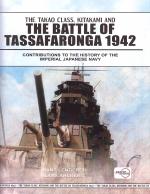The book Schnellboote, written by the already well-known naval author Zvonimir Freivogel, is divided into four parts; the first is about the genesis and the development of this warship category in Germany, the second an overview of all S-boat operations on the European war theaters between 1939 and 1945, the third is describing these vessels in the Bundesmarine, and the fourth is a short history of S-boats in the Volksmarine. The book is richly illustrated with over 200 photographs, drawings, and charts, and there are numerous tables with technical and building data, together with fates of all German wartime or post-war fast attack craft.
The German fast attack craft (Schnellboote, better known during the World War Two under the British designation E-boats) served as a warship category for almost hundred years in five German navies, from the Imperial German Navy (Kaiserliche Marine), over the Reichsmarine and Kriegsmarine, to the Federal German Navy (Bundesmarine) in the western and the People´s Navy (Volksmarine) in the eastern Germany, both established after 1945. The last units of this type were stricken in 2016, to be replaced by corvettes that are to fulfill similar duties in the narrow seas and coastal waters.
The Schnellboote were not often described in detail by the Anglo-American naval authors, and even the origin of the designation E-boats is not completely clear. It is believed that the meaning was “Enemy Boats”, but there were other German vessels belonging to the “boat” category (like the motor minesweepers, called R-Boote by the Germans and R-boats by the Allies, or minesweepers aka M–Boote/M-boats). Thus it is possible that the initial meaning was simply Express Boats, similar to Express Trains (Schnellzüge in German), and later the origin of the name was forgotten.









